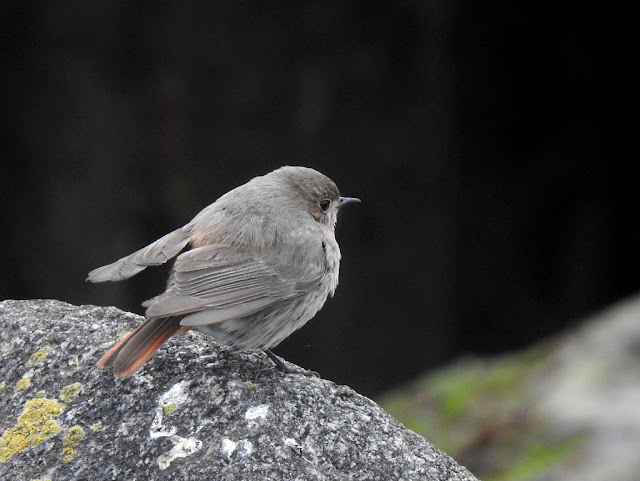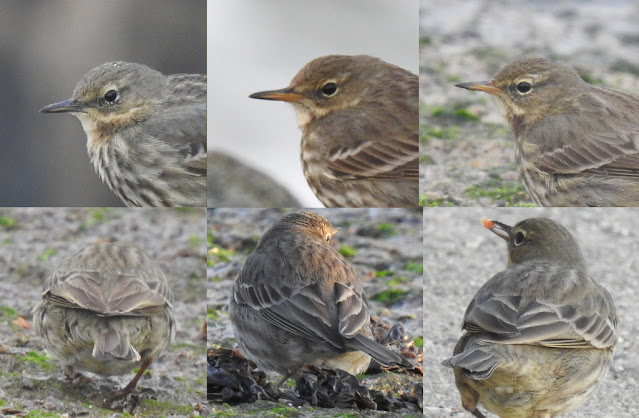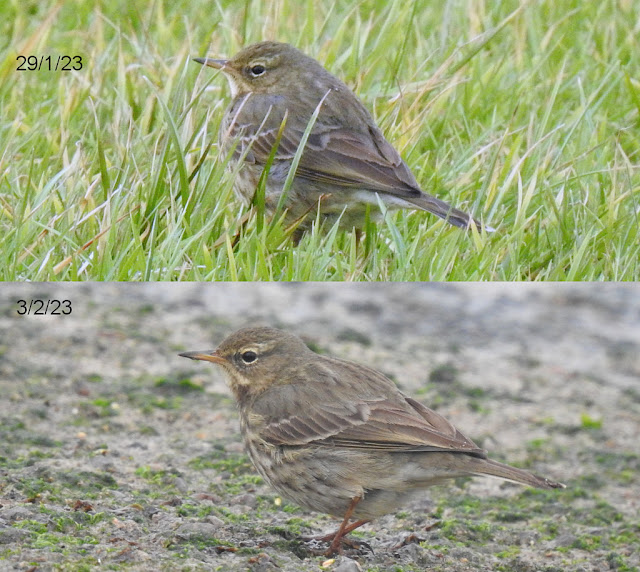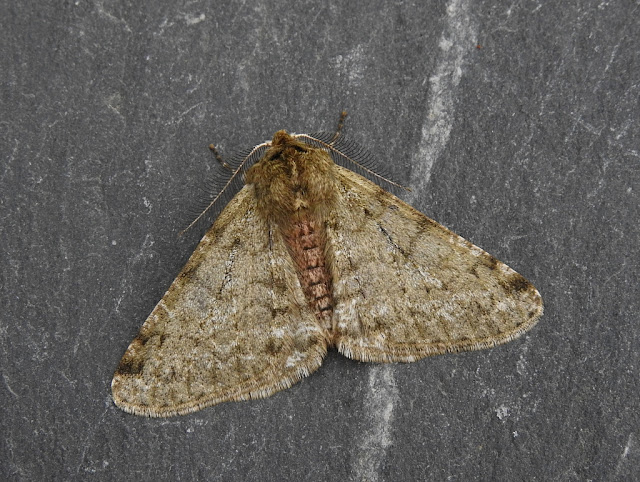So, that's February done. Bird-wise there has been little advance on January. The Patchwork Challenge totals have barely moved: West Bay & Eype is now on 68 species (84 points) and Bradpole North, 51 species (54 points). Thankfully I am easily pleased. Give me a Rock Pipit or two, or an interesting Cormorant, and I will play happily for ages. This afternoon I got out for a bit, and enjoyed the West Bay sunshine...

|
|
2nd-winter Med Gull on the river. I am 99% sure this individual
has been knocking about all winter, on and off. |
I was pretty confident that the combination of keen northerly wind and sunshine on the slipway rocks would provide at least one Black Redstart, but I got two...

|
|
The elusive male, on the furthest rocks. Only the third time I've seen
it. Silently, I willed it closer... |

|
|
The female. Again, not shy at all. |
For once, my will prevailed...

|
|
The gorgeous male Black Redstart. It wasn't as close as the photo
suggests, but 2000mm of P900 zoom + bright sunshine does a pretty good
job. I could hardly wish for a better pic of this beauty. |
Strolling along the sunny prom below West Cliff was bliss. 'Yes', I thought, 'Not long until Wheatears.' But in the meantime I will have to glean what I can. Which means looking at Cormorants, like this one just offshore...

|
|
Typical Cormorant-on-a-stick scenario. |
Rightly or wrongly, I have always thought of sinensis (Continental) Cormorants as a freshwater, inland thing. I am having to revise that prejudiced view...

|
|
No ambiguity about this one - it's definitely a sinensis. And as coastal as you can get. |
At the far end of the prom was a single Rock Pipit. Camera out...

|
|
Despite being unhelpfully back-lit, it is possible to make out a hint of
pink blush at the base of the throat. Also a very clean ground colour to
the underparts. Looking good for littoralis. |

|
|
Pink blush on the throat a little more obvious here. And is that a faint
greyish cast to the crown and ear coverts, or am I imagining it? |

|
|
Same Rock Pipit, but it looks a lot less remarkable in this
light/pose. |
I haven't yet been through my Rockit library to see if I have crossed paths with this one previously, but am quite happy to label it a littoralis. Finally, a hint of spring colour in one.
Last but not least, 'hweet'-ing away at the north end of the caravan park...

|
|
Chiffchaff, with a lovely black-cloud backdrop. |
Tomorrow is March. New month, new things. A bit overdue, but in the morning I plan to check out last year's Goshawk site. And in the evening I shall dust off the nocmig kit. What will the next 31 days bring, I wonder...?
It has clouded over a bit now, and I've been tempted into optimistic deployment of the moth trap. One micro so far, and it looks like a rather attractive version of Epiphyas postvittana, or Light Brown Apple Moth. Hopefully, by the morning it will have company.
On a completely different note...
Growing older is a weird experience. Mostly I don't feel my age, but there are certain things that bring home the stark reality with uncompromising frankness. For instance, whenever I see stuff from my childhood displayed in the harsh light of 2023, it looks so-o-o-o-o dated, like something from a history book. I know there are one or two anglers who read this blog, so the following may be of interest.
As a boy - and a painfully keen but unaccomplished coarse fisherman - I would visit the library every week in a quest for knowledge. The angling writers I sought, and devoured, were the likes of Richard Walker, Peter Stone, Colin Willock and Fred J Taylor. All are gone now, along with many others from my formative years. A couple of days ago I came across a video on YouTube. Featuring, and narrated by, the late Jack Hargreaves, it was filmed in the mid-1960s. The programme shows a fishing competition on the Dorset Stour, in which several children aged 9-11 are paired with famous anglers of the day (including the four listed above) and taught how to catch fish. The only fish to count in the competition are those caught by the youngsters. Everything about this film - the cameras, the people, the clothing, the fishing tackle, the black-and-white format - really, everything - dates it to another era, one long gone. It makes me feel very old indeed.
Very much of its time, with a quaint innocence that I find achingly nostalgic, here it is (you have to click on where it says 'Watch on YouTube')...
Or you can access it via THIS LINK.













































